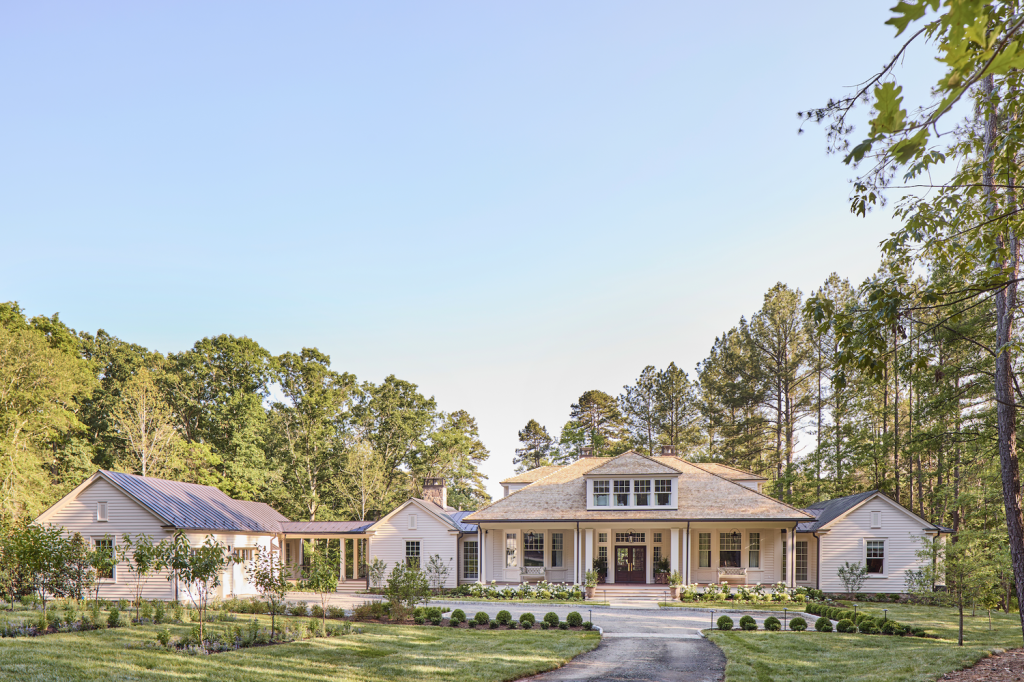:max_bytes(150000):strip_icc():format(jpeg)/SouthernLiving_IdeaHouseExterior_NoWatermark-b2781189b4214afb8c46119ef2d76423.png)
It’s no secret that we absolutely love a good show home here at Real Simple—after all, we do one every year! So when our sister brand Southern Living recently revealed their latest Idea House in their September issue, we were so excited to check out the gorgeous property. The 2025 Southern Living Idea House is a 4,500-square-foot home located in Keswick, Virginia, and it’s filled to the brim with brilliant design ideas.
Laurey W. Glenn for Southern Living
While the interiors are absolutely stunning (and had us asking when we can move in!), what really had us hooked was the landscaping, which was completed by Eugene Ryang of Waterstreet Studio. Ryang transformed the property with more than 1,700 plants—over 140 native species in all—while still honoring the natural terrain.
The five-acre site, nestled in the woods by a lake, feels like a “modern homestead,” with orchard plantings, a vegetable garden, and a native meadow for pollinators. The meadow may be young now, but it’s designed to evolve into a vibrant, ever-changing haven filled with wildflowers, butterflies, and bees.
According to Ryang, it’s a garden that matures, deepens, and becomes more beautiful with every season—his vision was a “lower maintenance” design that thrives over time. As he discussed his plans with us, he shared plenty of lessons for creating a garden that doesn’t just look good on day one, but only gets better year after year. Here are three takeaways you can work into your own yard.
Layer Plants for Instant and Lasting Impact
A thriving meadow takes years to fully establish. “Over time, it’s really a native warm-season grass and wildflower meadow,” Ryang said. “And that takes time. You might want to supplement it—sometimes broadcast more seed or no-till drill in more seed for wildflowers over time.”
Laurey W. Glenn for Southern Living
But that doesn’t mean your garden has to feel empty while you wait. “A lot of times folks will put in an annual planting of cosmos or something to get that immediate effect,” he noted. Even container gardens close to the house can echo the larger landscape.
“A lot of these perennials that you buy in the herb garden or the containers are some of the same perennial wildflowers that you would find in the meadow itself,” Ryang said. “It translates from that wild, woolly, organic expression of the meadow planting into this very containerized, very domestic kind of planted scenario.”
Be Patient—Landscapes Take a Long Time to Mature
Right now, the Southern Living Idea House’s landscape is still quite young. It looks beautiful, but it’s nowhere near its peak. “One thing about a homestead is that it takes time for it to mature,” Ryang explained. “It’s not something that you’re going to see immediately and get that instant gratification.”
Unlike architecture, which for the most part has a set completion date, a landscape’s beauty emerges slowly. “The perceived aesthetic value of the landscape on day one is low,” Ryang says. “But as you move through time, the house requires maintenance and management, and the landscape matures. The peak can be anywhere—10, 15, 20 years.”
Eugene Ryang of Waterstreet Studio
One thing about a homestead is that it takes time for it to mature. It’s not something that you’re going to see immediately and get that instant gratification.
— Eugene Ryang of Waterstreet Studio
Get Rid of “Non-Essential” Turf
Another way Ryang designed for longevity was by removing most of the traditional lawns. “We just get rid of non-essential turf areas,” he explained. Instead, he planted ecological patches that bring vibrancy and habitat. “They’re incredibly dynamic,” he said, describing clumping grasses that “allow for a lot of movement in between the grasses.” That open structure gives ground-dwelling birds like turkey, grouse, and quail places to forage, while wildflowers attract pollinators, butterflies, and bees.
Laurey W. Glenn for Southern Living
And perhaps best of all, this type of planting is way less demanding than turf. “If you have a lawn, a really nice lawn in the summertime, you probably have to mow once a week or maybe twice a week,” Ryang said. “But this, you just have to bush off once a year, or twice a year, depending.”
Tour the House
Great news: You can actually check out the home and garden in person! The Idea House is now open to the public until December 21, 2025. All you have to do is buy a ticket beforehand! A portion of the proceeds goes to three local organizations: Yellow Door Foundation, Hospice of the Piedmont, and Building Goodness Foundation.

